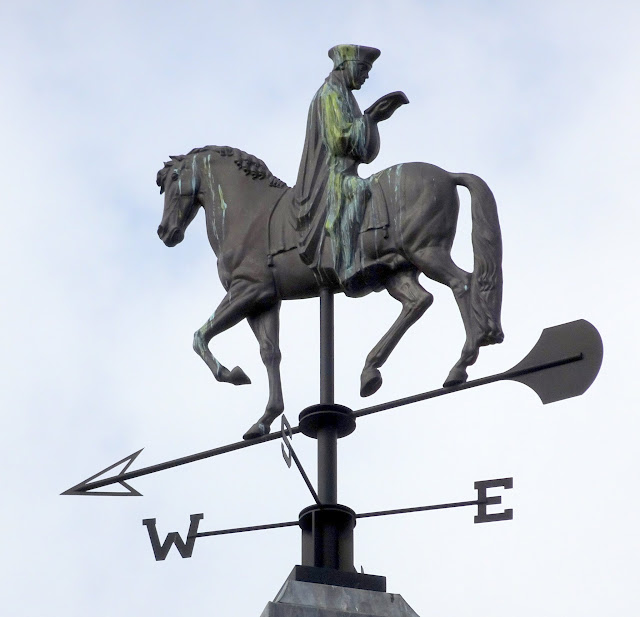Terrace Gardens contain two distinguished works of art. At the bottom of the hill close to the river stands a statue of Old Father Thames, a 1775 copy in Coade stone of an original by John Bacon the Elder. The god reclines on a block of stone, a floral wreath on his head, pouring the river waters out of a jar. It is a fairly standard classical production of the sort Bacon excelled in - there are other copies at Ham House and Somerset House.

At the top of the hill is a pond that used to surround a cast iron fountain that was taken away for salvage in WW2 (although rumours persist that, being difficult to recycle, it was in fact dumped in the river). To fill the space, in 1952 the sculptor Allan Howes presented the borough with a statue of Aphrodite that had been exhibited at the Royal Academy. Although Howes lived in Hammersmith, his wife was born in Richmond.
The Goddess of Love, uncompromisingly nude, sits on the head of a dolphin carrying a conch. Her robustly-proportioned body is built up of simple, almost geometrical shapes.
This being the 1950s, it caused a storm.The
Richmond and Twickenham Times ran no fewer than 84 letters describing her as an insult to the female form and calling for schoolchildren to be banned from looking at her. One letter sneeringly described her as 'Bulbous Betty', a nickname that, of course, stuck.
Another correspondent wrote: "The sculpture is as disturbing to gentlemen as Father Thames is to maidens," though what evidence he had for that assertion is unknown.
The council voted for her removal, but eventually the will of the tolerant but non-local-paper-letter-writing majority prevailed and she remains to delight us still.
But even the official plaque in front of her describes her as Bulbous Betty, poor girl.
 The classical lady with the wardrobe malfunction on the front of Frank Matcham's theatre is Euterpe, 'Giver of Delight', the muse either of music or lyric poetry depending on your preferred myth. She carries an aulos or double flute, the instrument she invented (or not, again depending on your source).
The classical lady with the wardrobe malfunction on the front of Frank Matcham's theatre is Euterpe, 'Giver of Delight', the muse either of music or lyric poetry depending on your preferred myth. She carries an aulos or double flute, the instrument she invented (or not, again depending on your source). The rest of the terracotta work on the facade was supplied by the Hathern Station Brick and Terra Cotta Company, including this mischievously satirical face.
The rest of the terracotta work on the facade was supplied by the Hathern Station Brick and Terra Cotta Company, including this mischievously satirical face.













